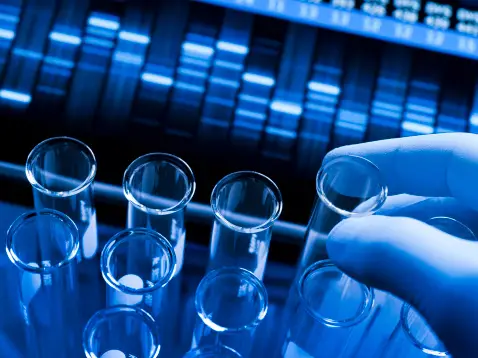
The Role of DNA In Genetics In 2023? Genetics is a fascinating field that has revolutionized our understanding of life and heredity. At the forefront of genetic research is the molecule called DNA, which stands for deoxyribonucleic acid. In 2023, the role of DNA in genetics continues to unravel and shape our knowledge of inherited traits, genetic diseases, and the diversity of life forms.
Understanding DNA Structure
H1: The Double Helix Model
The structure of DNA was first elucidated by James Watson and Francis Crick in 1953. DNA has a double helix shape, resembling a twisted ladder. The sides of the ladder consist of alternating sugar and phosphate molecules, while the rungs are formed by pairs of nitrogenous bases—adenine (A), thymine (T), cytosine (C), and guanine (G).
H2: Base Pairing and Complementary Strands
DNA strands are complementary to each other due to the base pairing rules. Adenine always pairs with thymine, and cytosine always pairs with guanine. This complementarity allows DNA to replicate accurately and carry genetic information.
H3: Chromosomes: Packaging DNA
In eukaryotic organisms, DNA is tightly packaged into structures called chromosomes. Chromosomes ensure the stability and organization of DNA within the nucleus of a cell. Humans have 46 chromosomes, arranged in 23 pairs.
DNA Replication: The Blueprint for Life

H1: The Replication Process
DNA replication is a fundamental process that occurs prior to cell division. It ensures that each daughter cell receives an identical copy of the genetic material. The replication process involves the unwinding of the DNA double helix, the formation of replication forks, and the synthesis of new DNA strands.
Read More: Discovering the Richness of French Cuisine In 2023
H2: Enzymes Involved in Replication
Several enzymes play crucial roles in DNA replication. DNA helicase unwinds the double helix, DNA polymerase adds nucleotides to the growing strands, and DNA ligase seals any gaps between fragments. These enzymes work together to ensure accurate and efficient replication.
Genes: The Instructions Encoded in DNA
H1: Definition of Genes
Genes are specific segments of DNA that contain instructions for the synthesis of proteins or functional RNA molecules. Each gene has a unique sequence of nucleotides that codes for a particular protein or RNA molecule, contributing to the traits and functions of an organism.
H2: Gene Expression and Regulation
Gene expression refers to the process by which the information encoded in a gene is used to synthesize a functional product. Gene regulation mechanisms control when and where genes are expressed, allowing cells to respond to environmental cues and develop specialized functions.
Genetic Variation: Unveiling the Diversity
H1: Sources of Genetic Variation
Genetic variation is the basis for diversity within and among species. It arises from different sources, including mutations, recombination, and gene flow. Mutations are spontaneous changes in the DNA sequence, while recombination and gene flow shuffle existing genetic material.
H2: The Role of DNA in Evolution
DNA provides the raw material for evolutionary processes. Through natural selection and genetic drift, advantageous traits can spread in a population, leading to adaptation and speciation. DNA analysis allows scientists to trace the evolutionary history and relationships between species.
DNA and Inherited Traits

H1: Mendelian Genetics
Gregor Mendel’s work laid the foundation for our understanding of inheritance. Mendelian genetics describes the transmission of traits from parents to offspring through discrete units called alleles, located on chromosomes. DNA carries the instructions for these alleles, determining the traits we inherit.
H2: Complex Traits and Polygenic Inheritance
Not all traits are controlled by a single gene. Complex traits, such as height or intelligence, result from the combined influence of multiple genes and environmental factors. Polygenic inheritance involves the contribution of many genes to the phenotype.
DNA Mutations: Unraveling Genetic Diseases
H1: Types of DNA Mutations
DNA mutations are alterations in the DNA sequence, which can occur spontaneously or be induced by external factors. Point mutations involve changes in a single nucleotide, while chromosomal mutations affect larger segments of DNA. These mutations can lead to genetic diseases.
H2: Genetic Testing and Diagnosis
Advancements in DNA sequencing technologies have revolutionized genetic testing and diagnosis. Various techniques, such as polymerase chain reaction (PCR) and next-generation sequencing (NGS), allow scientists to identify mutations associated with genetic disorders and provide targeted treatments.
DNA Sequencing: Decoding the Blueprint

H1: The Human Genome Project
The Human Genome Project was an international effort to sequence the entire human genome. Completed in 2003, it provided a blueprint of human DNA and opened new avenues for understanding genetic diseases, personalized medicine, and evolutionary history.
H2: Next-Generation Sequencing
Next-generation sequencing techniques have made DNA sequencing faster and more affordable. These methods allow researchers to sequence large amounts of DNA, enabling the study of complex genetic traits and the identification of novel disease-causing genes.
Epigenetics: Beyond the DNA Sequence
H1: Epigenetic Modifications
Epigenetics refers to heritable changes in gene expression that do not involve alterations in the DNA sequence itself. Epigenetic modifications, such as DNA methylation and histone modifications, play crucial roles in development, aging, and the interaction between genes and the environment.
H2: Transgenerational Epigenetic Inheritance
Emerging evidence suggests that epigenetic modifications can be passed from one generation to the next. Transgenerational epigenetic inheritance may contribute to the transmission of acquired traits or increased susceptibility to certain diseases across generations.
DNA Technology: Advancing Genetic Research
H1: CRISPR-Cas9 Gene Editing
CRISPR-Cas9 is a revolutionary gene-editing technology that allows scientists to precisely modify DNA sequences. It has the potential to treat genetic diseases, create disease models, and enhance crop productivity. However, ethical considerations and careful regulation are essential in its implementation.
H2: DNA Barcoding and Forensic Genetics
DNA barcoding utilizes specific DNA regions to identify and classify species. It has applications in biodiversity studies, food safety, and forensic genetics. DNA profiling, based on highly variable regions of the genome, is widely used in criminal investigations for identification purposes.
Ethical Considerations in DNA Research
H1: Privacy and Genetic Data
The collection and analysis of DNA data raise concerns about privacy and data security. Genetic information is highly personal and can reveal sensitive details about an individual’s health, ancestry, and predisposition to diseases. Strict regulations and informed consent are crucial in protecting individuals’ privacy.
H2: Genetic Discrimination and Stigmatization
Genetic information has the potential to be misused for discrimination or stigmatization. Concerns arise regarding employment, insurance, and social implications. Legal protections and public awareness are necessary to ensure equal treatment and prevent the misuse of genetic data.
Future Perspectives in DNA and Genetics
Advancements in DNA research continue to shape the field of genetics. As technology progresses, we can anticipate:
- More precise gene-editing techniques for therapeutic applications.
- Improved understanding of complex genetic traits and personalized medicine.
- Greater insights into the role of epigenetics in health and disease.
- Enhanced methods for genetic diagnosis and disease prevention.
- Ethical and societal discussions surrounding emerging technologies.
Conclusion
DNA plays a central role in genetics, serving as the blueprint of life and the carrier of genetic information. Our understanding of DNA’s structure, replication, and functions has paved the way for significant breakthroughs in genetic research. From inherited traits and genetic diseases to evolutionary history and personalized medicine, DNA continues to unravel the mysteries of life. As we navigate the ethical considerations and embrace new technologies, the future of genetics holds promising advancements and profound implications.
FAQs
Q1: How was DNA discovered?
DNA was first discovered by Friedrich Miescher in 1869. However, its structure and significance in genetics were elucidated by James Watson and Francis Crick in 1953.
Q2: What is the relationship between genes and DNA
? Genes are segments of DNA that contain instructions for the synthesis of proteins or functional RNA molecules. DNA carries the genetic information necessary for the expression of these genes.
Q3: Can DNA mutations be beneficial?
While most mutations have negative effects or no significant impact, some mutations can be beneficial under certain circumstances. They can contribute to evolutionary adaptations and the survival of species.
Q4: How does DNA sequencing work? D
NA sequencing involves determining the precise order of nucleotides in a DNA molecule. Various techniques, such as Sanger sequencing and next-generation sequencing, are used to read the sequence of bases.
Q5: What are the ethical implications of genetic testing?
Genetic testing raises concerns about privacy, discrimination, and the potential psychological impact of test results. It is crucial to have clear guidelines, informed consent, and regulations to address these ethical considerations.












One Comment